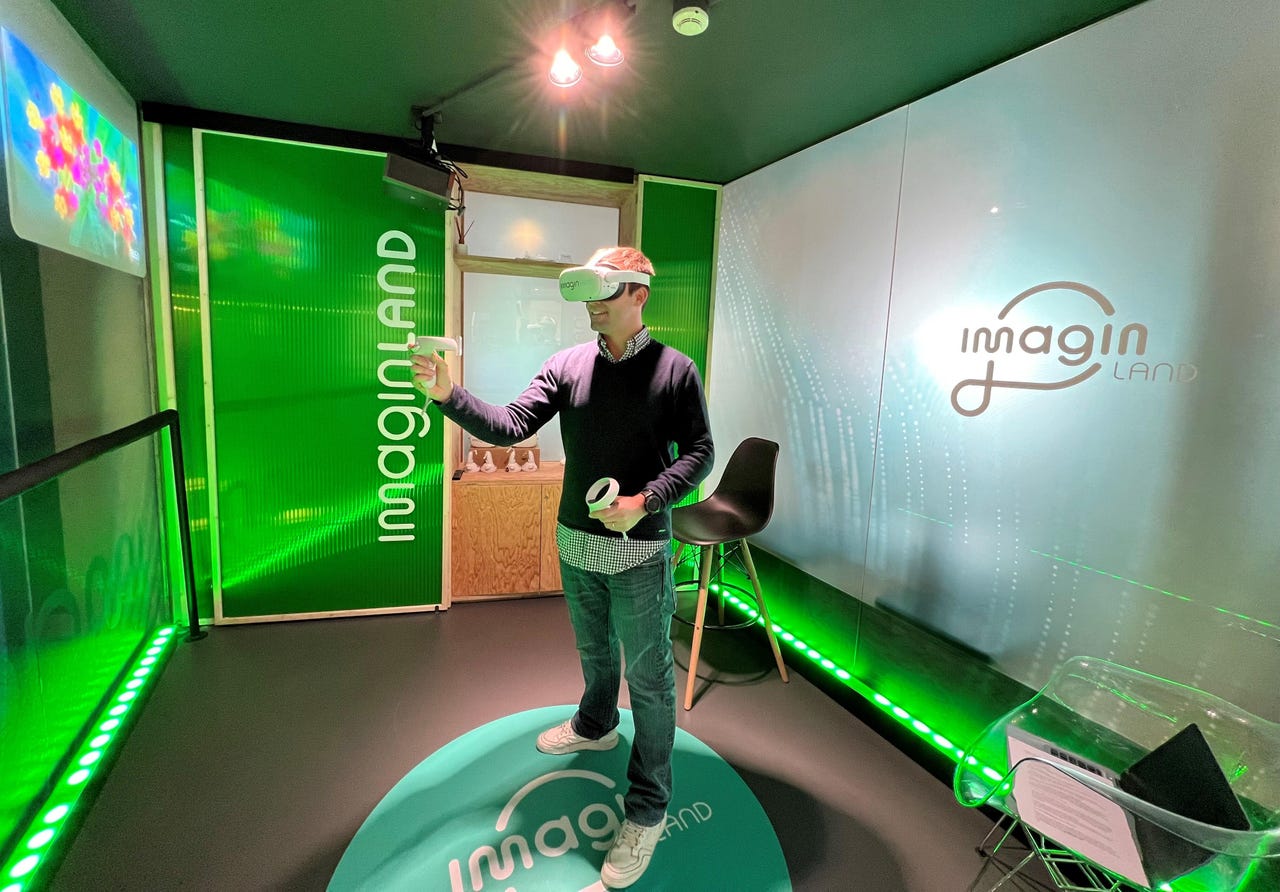Banks in the metaverse can't lend you money yet, but they still want to sell you the dream


Meta's vision for the metaverse depicts a mixed reality blending the physical and the digital world, which gives students new interactive-learning environments or surgeons the ability to practice before laying their hands on a real patient.
But for the moment, the concept developed by Mark Zuckerberg's company consists of different platforms similar to those offering multiplayer online role-playing games or virtual worlds like Second Life (launched in 2003) – albeit with better computer graphics and crypto payments.
Cai Felip, CEO at Linking Realities, a Catalan company specializing in avatars, disagrees. "For me, it's an open socialization space that somehow recovers the original idea of the internet", he tells ZDNet.
Felip points out that, in 2021, $4.2bn was spent on skins trading and the D2A (Direct to Avatar Economy) is expected to reach one trillion dollars in the next decade. A Citi report issued in March 2022 backs his statements: the metaverse economy could hit $13 trillion by 2030, with total metaverse users numbering around five billion.
Spanish companies such as Zara, Balenciaga in the fashion sector and Metrovacesa, in the real-estate sector, have already jumped in. Now, the largest banks in the country are also exploring the potential of virtual reality (VR) in bringing a more personalized experience to clients and developing new products. At least, that's what they say.
Banks and businesses know that micropayments will be key in this space of socialization, and that cryptocurrencies will dominate and maybe even coexist with fiat currencies, so they want to be there. Economics and social research think tank (FUNCAS) found that 47% of bankers believe their clients will use VR and augmented reality (AR) as a channel for financial transactions in 2030.
In February, major Spanish banks Banco Santander and BBVA made their debut in the Decentraland metaverse through Metrovacesa. Both banks are shareholders of the real-estate developer, with 49.4% and 20.9% respectively. The following month, imaginBank, the digital services and lifestyle platform backed by CaixaBank, launched its own virtual space within the Decentraland metaverse.
imagin's imagineCafe, a Metaverse space based on its real-life co-working space in Barcelona.
imaginLAND is a virtual replica of imaginCafé, imagin's coworking space in downtown Barcelona. The plot is built from 90,000 digital land 'parcels', every one of which is a non-fungible token (NFT), meaning it can't be recreated. It not only offers financial services but also lifestyle digital content, such as music, videogames, technology products, and guidance on sustainability, to attract GenZ customers, as well as integrations with various social media platforms.
For David Urbano, CMO of Imagin at CaixaBank, jumping into the metaverse was "a natural step to strengthen the relationship with clients and enrich imagin's digital offering."
Urbano is convinced the metaverse will allow banks to maintain "the kind of touchpoints new generations may require – perhaps through discussing financial planning with a human adviser via an avatar, without the need of a branch visit." This might bring new products in the future, but he doesn't specify what they might be. Still, he acknowledges that payments will be one of the most affected services.
SEE: The future of money: Where blockchain and cryptocurrency will take us next
BBVA echoes this sentiment. In early June, at the South Summit conference in Madrid, the bank presented its own virtual replica, recreating its iconic building La Vela (the sail), located in Las Tablas neighborhood of Madrid, in the metaverse. In this virtual building, clients were informed about their assets and could make decisions about their financial health. The bank is now looking for new features and use cases for its virtual branch through an ongoing hackathon. Teams will compete for the next three months, and the winner of the challenge will be announced in October 2022.
Edgar Martín-Blas, CEO of XR projects at Virtual Voyagers, who participated in a BBVA session, recognizes that people are still puzzled about the metaverse. He thinks that it will be easier to understand in the future, though, and thinks it will look akin to Spielberg's film Ready Player One, technologically speaking. Another matter is whether this is necessarily good: in the film, people's real-world lives are terrible.
User unfriendly
Another problem facing the metaverse is that devices required for accessing any immersive world are not very user-friendly – not even for GenZ gamers, who already spend a great amount of time in the metaverse, according to a Razorfish study.
Cai Felip thinks we will soon be using regular glasses or even contact lenses with a variable level of opacity, to leverage the advantages of mixed reality. "We will gradually see new forms of using the metaverse. It will have a massive audience sooner than we think," he insists.
As for now, banking services in the metaverse are limited. CaixaBank and Microsoft signed a joint innovation agreement in June intended to create new and innovative work environments in the metaverse, as well as promote the application of artificial intelligence (AI) to new financial solutions.
The new laboratory, located in Barcelona, will work in coordination with Microsoft's AI Research and Development hub, also situated in the city, and will employ nearly a hundred software developers, data scientists and machine-learning specialists.
SEE: Cryptocurrency investments are growing. But banks and regulators are taking a cautious approach
"You can't brag about being in the metaverse when you're not remote-first," says Benjamí Villoslada, co-founder of Menéame, a Spanish social news website based on community participation.
"In certain banks, you still need to go to a branch to bring signed PDFs for an operation. So how can you expect to do that in the metaverse?", Villoslada says. Indeed, there's still work to be done and, besides, digital products don't usually end up exactly the way founders envisioned them in the first place, he adds.
Even if it's still raw, the metaverse presents an innovative way of exploring new horizons and promoting banking services – which might at least appeal to the younger, more tech-savvy generation of banking customers.
Carles Gomara, technology expert at ACCIÓ, Catalan Government's agency for business competitiveness, agrees that marketing is a big part of the metaverse equation right now, and banks are seizing the opportunity. It's not the first time that banks have tried to move into the virtual realm with Gomara recalling Spanish bank Banesto's attempt at opening 'an island for entrepreneurs' in Second Life in 2009.
Yet things have moved on drastically since then, and the emergence of Web3 raises further questions about how banks can sit within a potentially decentralized metaverse. In any case, Gomara points out that it's only natural to be sceptical of new things.
"It's true that there is a lot of hype about the metaverse right now, but that has happened with all the new technologies. And that's OK", he says.
"After exaggeration and exploration, the selection will come. The weakest branches will be pruned so that the others grow stronger."